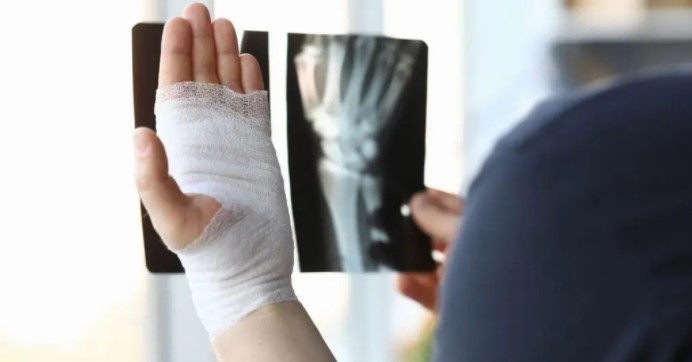

Fractures are a break, usually in a bone and are very common. There are several different ways in which a bone may fracture, if the bone does not do any damage to the surrounding tissue it is called a closed fracture, but if the bone tears through the skin it is then known as a compound fracture. Human bones are fairly strong and can often times withstand fairly strong impacts, but if the force is too powerful or there is something wrong with the bone it may fracture.
As we age, our bones become weaker and the less force they can withstand. There is a wide range of fracture types including, avulsion fracture, comminuted fracture, compression fracture, fracture dislocation, greenstick fracture, stress fracture and hairline fracture, just to name a few.
At NYSI we are dedicated to caring for our patients with the most personalized care for your condition. Our highly skilled team of doctors are well equipped to provide you with the highest quality of care while also creating a specialized treatment plan to help relieve symptoms.*
Our specialists are industry leaders, working under the guidance of our medical director, Alexandre B. de Moura, M.D. FAAOS. We treat a variety of neck and spine disorders and strive to give our patients exceptional care and specialized treatment options.
Our dedicated team of professionals here at NYSI also can speak a variety of different languages to help accommodate our patients. The languages include Spanish, Portuguese, French, Italian, German, and Russian. We are proud to be able to serve the needs of all of our patients.
Fractures are most commonly caused by automobile accidents, falls, or sports injuries. Healthier bones can undergo surprisingly powerful impacts but as we age, risk of fractures become greater due to weaker bones and being at a greater risk of falling. Children are also prone to fractures. There are other underlying conditions that may strengthen the risk of bone fractures such as low bone density and osteoporosis or weakening of the bones, infection, and other conditions.
The doctor will perform a physical examination, identifying and signs and symptoms that may result in a fracture. Often, doctors will order X-ray images or an MRI or CT scan to help further determine the type of fracture and where it is located.
To properly diagnose a bone fracture and to determine a treatment plan that is appropriate for your specific condition, seeking professional care is the most effective way to begin relieving your symptoms.*
The New York City Spine Institute is dedicated to treating all types of bone fractures. Whether the right treatment option includes, physical therapy or surgery, we want to help improve your quality of life.*
Treatment for healing bone fractures is usually aimed at making sure the injured bone is immobile to ensure optimal healing. Bone healing is a natural process that will occur automatically in most cases. The doctor may need to line up the broken bone into a position for healing or also known as reducing the fracture before then making sure that the position of the fracture doesn’t move during the healing process. Sometimes fractures can be more severe, in which case may require a surgical procedure to realign the bone fragments to make sure there is the best possible function of the injured part after healing.
*The effectiveness of diagnosis and treatment varies from patient to patient and depending on your specific condition. The New York City Spine Institute does not guarantee certain results.